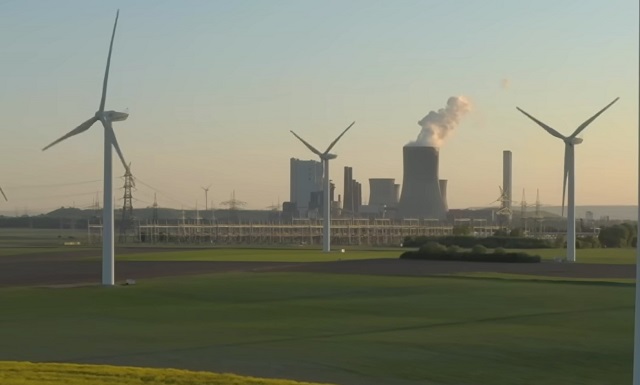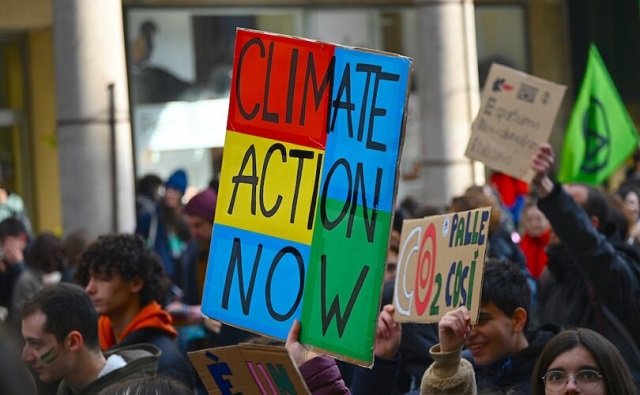Opinion
10 days into Election 2017 and the focus today is the province. What sayeth the candidates, or some at least?

Macleans published a list of the top 100 cities in Canada to retire in and Red Deer was not on the list. One of the criteria is access to health care. Apparently we rate pretty low in that category.
This is a provincial jurisdiction but some candidates are weighing in on this issue. One talks about how the hospital is always under renovation. The new parkade has come under fire for different reasons. Two suggests building a second hospital altogether, having 2 separate hospitals.
Access to timely treatment and surgery is a common issue. Another common complaint is the need to leave the city for surgery, see a specialist or for assisted living.
Seniors and others who cannot live on their own, take up a hospital bed awaiting a home in an assisted living facility. There are many stories of long-time residents spending their final years in Innisfail, Stettler and Rimbey to name but a few. Creating hardships for family and spouses remaining in Red Deer.
No wonder we did not make the list of top 100 cities to retire in.
What do some of the candidates say;
Tara Veer on the Red Deer Regional Hospital
Even though Hospital infrastructure is completely under the decision-making jurisdiction of the Provincial Government, the needs of our community are a priority for the City. There are numerous examples over the past four years of the City strongly advocating to the Provincial Government to fulfill our local provincial infrastructure needs; The Hospital is one of them and most certainly will continue to be a priority until we secure the expansion of the Red Deer Regional Hospital.
Mayor Veer has spoken and/or written substantially on this issue and this latest excerpt on Todayville.com; “I have also met and spoken with our local MLA’s and the Minister of Health regarding our community’s expectations regarding Hospital infrastructure on multiple occasions. If citizens of Red Deer would like to add their voice to our community and Council’s advocacy efforts, we encourage citizens to contact the Minister of Health and your local MLA (Kim Schreiner or Barb Miller if you live in Red Deer).”
Ken Johnston
I am meeting with our MLA’s tomorrow as have been through meetings with the Doctor group, the Foundation, private donors and AHS. I can’t speak for other candidates but that is how I am advocating for our City. Lives continue to be at risk in Red Deer and the Central Zone, I can personally attest to that. It is Capital that is needed and righting a gross inequality in Health Care spending.
Sam Bergeron
-A school and a hospital would be helpful. An elementary, middle and high school for that matter. Even a small hospital would help the north end
Lawrence Lee
We also desperately need a Regional Hospital Centre upgrade. For at least a decade we have seen the over 400,000 people that the Red Deer Regional Hospital serves not receive the same level of care that Albertans have in Edmonton and Calgary. As the province’s third largest city and a hospital that serves such a large population I will fight to support our Central Alberta region in achieving health equity and care for its residents
Michael Dawe
Having been a one time chair of the former Red Deer Regional Hospital Board knows the issues and intricacies of the hospitals would also be an informed advocate for the hospital.
I remember having very similar concerns thirty years ago and a political candidate in a federal election reminded us that we cannot have good health without a good job, money for food, a sense of security and a roof over our head. Many of these issues can be handled by city council leaving the issue of the hospital as a precursor for the provincial election of May 2019.
Red Deer can advocate for the province to step up, but there are many things the city council can do locally to ease the demand on the hospital. Let us hear from all the candidates, shall we?
Energy
Market Realities Are Throwing Wrench In Biden’s Green Energy Dreams

 From the Daily Caller News Foundation
From the Daily Caller News Foundation
For two years now, I and others have been pointing out the reality that there is no real “energy transition” happening around the world. Two new items of information came to light this week that irrevocably prove the point.
It is true that governments across the western world appear to be working to bankrupt their countries by pouring trillions of debt-funded dollars, Euros and British pounds into central planning efforts to subsidize renewables and electric vehicles into existence. That reality cannot be denied. The trouble is that no amount of debt money can turn the markets and the markets aren’t cooperating.
Despite all the government largesse that has spurred major additions of wind and solar generation capacity, those weather-reliant energy sources can’t even keep up with the pace of rising demand for electricity. As a result, the markets dictated that the world consumed record levels of coal, natural gas, oil and even wood during 2023. Yes, we are still burning vast amounts of wood for electricity, despite an alleged “transition” from wood to coal which began 500 years ago.
That is reality, dictated by the markets.
Two new bits of data came to light this week that pound the final nails into the coffin of the narrative around the energy transition. A report in the Financial Times, citing data compiled by Grid Strategies, reveals that the buildout of new high-voltage transmission lines in the United States slowed to a trickle in 2023, with just 55.5 additional miles installed. That collapse comes despite the Biden government’s recognition that a massive expansion of this type of transmission lines must happen to accommodate the demands of any true “transition” to renewables.
The Financial Times quotes a 2023 assessment by the Department of Energy that found that “regional transmission must more than double and interregional transmission must grow more than fivefold by 2035 to meet decarbonization targets.” DOE admits such a pace would add more than 50,000 miles of new transmission in just 11 years, which is almost 1,000 times the pace of adds during 2023. Yikes.
A crucial aspect of that DOE study to understand is that it was conducted before we began to understand the true magnitude of additional power demands that will result from the explosive growth of AI technology just now starting to come to full bloom. It was just this past January, at the WEF Forum in Davos, where OpenAI CEO Sam Altman told the audience he believes generation capacity on the grid will have to double over the next decade just to fill the AI demands alone. That is what is needed in addition to the rising demands for EV charging, industrial growth, population growth and economic growth.
The second piece of compelling data arising this week comes from a Bloomberg story headlined, “Data Centers Now Need a Reactor’s Worth of Power, Dominion Says.” The key thing to understand about this story is that the piece is only referencing the needs of planned new data centers being built in Northern Virginia to feed AI development in that tiny sliver of the United States.
This key excerpt from the story says it all: “Over the past five years, Dominion has connected 94 data centers that, together, consume about four gigawatts of electricity, Blue said. That means that just two or three of the data center campuses now being planned could require as much electricity as all the centers Dominion hooked up since about 2019.”
That is not just rapid growth, it is exponential growth in power demand from a single developing technology.
Demand growth needs such as this aren’t going to be filled by unpredictable, unreliable, weather-dependent generation like windmills and solar arrays. And let’s face it: The United States is not going to be able to continue expanding renewables without finding some way to create a massive expansion of transmission. Why build the generation if you can’t move the electricity?
What it all means is that all the grand Biden Green New Deal plans to shut down America’s remaining coal fleet and much of its natural gas generation fleet are going to have to wait, because the market will not allow them. That’s reality, and reality does not care about anyone’s green transition dreams.
David Blackmon is an energy writer and consultant based in Texas. He spent 40 years in the oil and gas business, where he specialized in public policy and communications.
The views and opinions expressed in this commentary are those of the author and do not reflect the official position of the Daily Caller News Foundation.
Business
UN plastics plans are unscientific and unrealistic

News release from the Coalition of Concerned Manufacturers and Businesses of Canada
“We must focus on practical solutions and upgrading our recycling infrastructure, not ridiculous restrictions that will harm our health care system, sanitary food supply, increase costs and endanger Canadians’ safety, among other downsides.”
This week Ottawa welcomes 4,000 delegates from the United Nations to discuss how they will oversee a reduction and even possible elimination of plastics from our lives. The key problem is no one has ever figured out how they will replace this essential component of our modern economy and society. The Coalition of Concerned Manufacturers and Businesses of Canada (CCMBC) has launched an information campaign to discuss the realities of plastic, how it contributes massively to our society and the foolishness of those who think plastics can be eliminated or greatly reduced without creating serious problems for key industries such as health care, sanitary food provision, many essential consumer products and safety/protective equipment, among others. CCMBC President Catherine Swift said “The key goal should be to keep plastics in the economy and out of the environment, not eliminate many valuable and irreplaceable plastic items. The plastics and petrochemical industries represent about 300,000 jobs and tens of billions contribution to GDP in Canada, and are on a growth trend.”
The UN campaign to ban plastics to date has been thwarted by reality and facts. UN efforts to eliminate plastics began in 2017, motivated by such terrible images as rivers with massive amounts of floating plastic and animals suffering from negative effects of plastic materials. Although these images were dramatic and disturbing, they do not represent the big picture of what is really happening and do not take into account the many ways plastics are hugely positive elements of modern society. Swift added “Furthermore, Canada is not one of the problem countries with respect to plastics waste. Developing countries are the main culprits and any solution must involve helping the leading plastics polluters find workable solutions and better recycling technology and practices.”
The main goal of plastic is to preserve and protect. Can you imagine health care without sanitary, flexible, irreplaceable and recyclable plastic products? How would we keep our food fresh, clean and healthy without plastic wraps and packaging? Plastic replaces many heavier and less durable materials in so many consumer products too numerous to count. Plastics help the environment by reducing food waste, replacing heavier materials in automobiles and other products that make them more energy-efficient. Many plastics are infinitely recyclable and innovations are taking place to improve them constantly. What is also less known is that most of the replacements for plastics are more expensive and actually worse for the environment.
Swift stated “Environment Minister Steven Guilbeault has been convinced by the superficial arguments that plastics are always bad despite the facts. He has pursued a campaign against all plastics as a result, without factoring in the reality of the immense value of plastic products and that nothing can replace their many attributes. Fortunately, the Canadian Federal court overturned his absurd ban on a number of plastic products on the basis that it was unscientific, impractical and impinged upon provincial jurisdiction.” Sadly, Guilbeault and his Liberal cohorts plan to appeal this legal decision despite its common-sense conclusions. Opinion polls of Canadians show that a strong majority would prefer this government abandon its plastics crusade at this point, but history shows these Liberals prefer pursuing their unrealistic and costly ideologies instead of policies that Canadians support.
The bottom line is that plastics are an essential part of our modern society and opposition has been based on erroneous premises and ill-informed environmentalist claims. Swift concluded “Canada’s record on plastics is one of the best in the world. This doesn’t mean the status quo is sufficient, but we must focus on practical solutions and upgrading our recycling infrastructure, not ridiculous restrictions that will harm our health care system, sanitary food supply, increase costs and endanger Canadians’ safety, among other downsides.” The current Liberal government approach is one that has no basis in fact or science and emphasizes virtue-signaling over tangible and measurable results. Swift noted “The UN’s original founding purpose after World War II was to prevent another world war. Given our fractious international climate, they should stick to their original goal instead of promoting social justice warrior causes that are unhelpful and expensive.”
The CCMBC was formed in 2016 with a mandate to advocate for proactive and innovative policies that are conducive to manufacturing and business retention and safeguarding job growth in Canada.
SOURCE Coalition of Concerned Manufacturers and Businesses of Canada
-

 Business6 hours ago
Business6 hours agoUN plastics plans are unscientific and unrealistic
-

 Brownstone Institute9 hours ago
Brownstone Institute9 hours agoThe Teams Are Set for World War III
-

 Education4 hours ago
Education4 hours agoSupport a young reader through the Tim Hortons Smile Cookie campaign
-

 Opinion7 hours ago
Opinion7 hours agoThe Climate-Alarmist Movement Has A Big PR Problem On Its Hands
-

 Addictions8 hours ago
Addictions8 hours agoWhy can’t we just say no?
-

 Opinion2 days ago
Opinion2 days agoClimate Murder? Media Picks Up Novel Legal Theory Suggesting Big Oil Is Homicidal
-

 Energy1 day ago
Energy1 day agoNet Zero’s days are numbered? Why Europeans are souring on the climate agenda
-

 Economy2 days ago
Economy2 days agoOttawa’s homebuilding plans might discourage much-needed business investment



